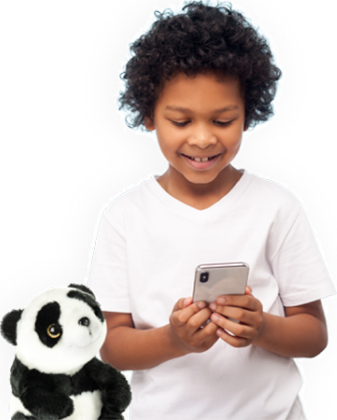Enuresis nocturna
Many parents contact us because their doctor or urotherapist has told them that their child suffers from enuresis nocturna (medical term for bedwetting). Since this is not a commonly known word, this can still cause them uncertainty! In this article we'll tell you all about it.

Is enuresis nocturna the same as bedwetting?
By looking at the two words in enuresis nocturna separately, a lot already becomes clear! Enuresis is a medical word for letting your pee run involuntarily; nocturna indicates that something happens at night. By combining these words you have "bedwetting"!
We do often find that parents who contact us and talk about enuresis nocturna are already a little further along in the medical research.
My little one has been diagnosed with enuresis nocturna, now what?
Enuresis Nocturna occurs in lots of children, so you are not alone! Perhaps your family doctor or urotherapist has already provided some guidance. The Nederlands Huisartsen Genootschap has a guideline for enuresis nocturna on their website. We recommend always following this guideline to help your child as effectively as possible!

What does the treatment of enuresis nocturna look like?
Record
Most parents are familiar with this method. Until 5-6 years of age, it is very common to put the child on the toilet during the night to empty the bladder. We also find that parents use this method with children who wet the bed as many as three times in one night. You should always make the trade-off between letting the body learn and the night's rest your child needs.
Motivation Method
If you find that your child is simply not as motivated to get dry, you can work with this. One of the key success factors in treating enuresis nocturna is motivation. Many parents tend to reward their child when they do something right, but punish them when they do something "wrong. When treating Enuresis nocturna, it is important to reward your little one for effort. If you notice that your child is doing everything possible to stop wetting the bed, you are on the right track!
The potty training method
Science shows that this is one of the most effective ways to get rid of Enuresis Nocturna. Several studies show a 70% to 93% success rate in children between 5 and 12 years old.
We designed the Dryly bedwetting alarm so that an annoying subject like Enuresis Nocturna is turned into a fun adventure with Wizzu the panda bear.
When you receive the Dryly bedwetting alarm, it includes Wizzu the panda bear, underwear, a receiver and a transmitter. By the time your child goes to bed, they put on the bedwetting alarm underwear and begin the bedtime ritual in the Dryly app. Part of this includes reading a book, going to the bathroom and unwinding. On the underwear, you attach the transmitter. This guards against an accident.
If your child begins to urinate in bed while asleep, the transmitter notices and sends a message to the receiver. The receiver plays a sound so your child wakes up. It also sends a message to the Bedwetting Alarm app on your smartphone. This allows you to properly support your child with urinating and changing the Dryly pee pants.
Through the bedwetting alarm method, the child learns to recognize the messages of a full bladder better and better because it is awakened each time it becomes "too much. We hear stories of parents who became dry in a matter of weeks, but we advise that you should count on a trajectory of 2-3 months anyway.
Reimbursed by insurers
Did you know that there is a solution against Enuresis Nocturna that is reimbursable? What many people don't know is that the bedwetting alarm is reimbursed by many insurance companies. Depending on the health insurance company and the package, this may be in whole or in part. Unfortunately, about 8% of health insurance companies do not cover the bedwetting alarm. Want to know if your insurance company will cover the bedwetting alarm? Take a quick look at our reimbursements page.
Best bedwetting alarm including app
The alarm that goes off when urinating causes children to make the connection between a full bladder and having to go to the bathroom themselves at a moment's notice. Initially, the alarm will cause the child to startle, wake up and tighten the sphincter of the bladder. The behavior is then learned during this period. When the bedwetting alarm is used for a few weeks, the child will make a connection between the alarm and a full bladder. By learning the behavior to go to the bathroom, when the bladder is full, the child will wake up and go to the bathroom by himself. This process is called classical conditioning.
With panda bear Wizzu as a new best friend, the adventure is about to begin. Also in the mobile app, Wizzu is always nearby. Wizzu is always there for you and helps on your way to dry nights. You can even personalize Wizzu, save points for every dry night and exchange these points for cool sunglasses or a nice hat, for example.
Besides fun features, it also helps parents keep track of bed-wetting behavior. For example, the app notifies you when bedwetting occurs and you can also track progress. This allows you to see at a glance how the child is progressing.
The interactive mobile app, the panda toy Dryly®, the cool underwear and operation are at the heart of the adventure.
